
How to Use step up boost converter: Examples, Pinouts, and Specs
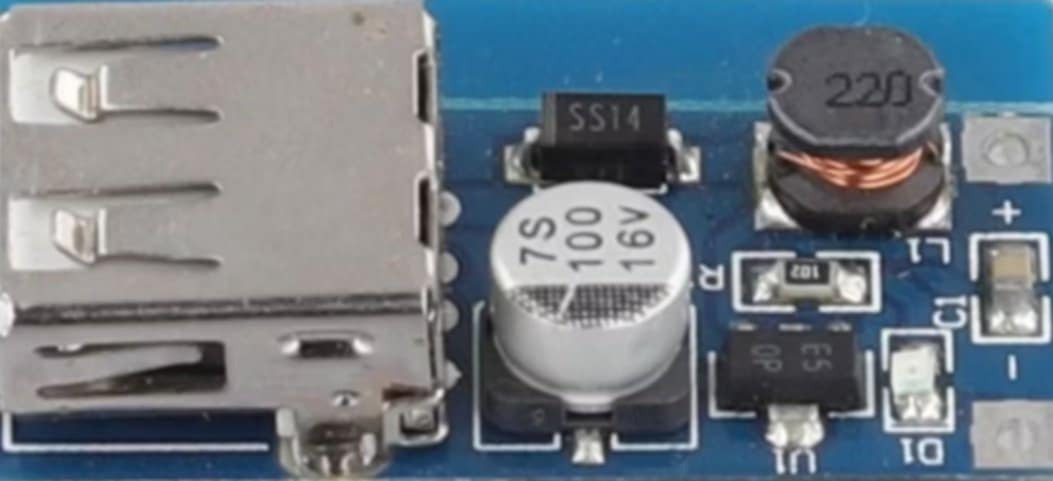
 Design with step up boost converter in Cirkit Designer
Design with step up boost converter in Cirkit DesignerIntroduction
A step-up boost converter is a type of DC-DC converter designed to increase the input voltage to a higher output voltage while maintaining power. It achieves this by utilizing an inductor, a switch (typically a transistor), a diode, and a capacitor to store and transfer energy efficiently. This component is widely used in applications where a higher voltage is required from a lower voltage source.
Explore Projects Built with step up boost converter
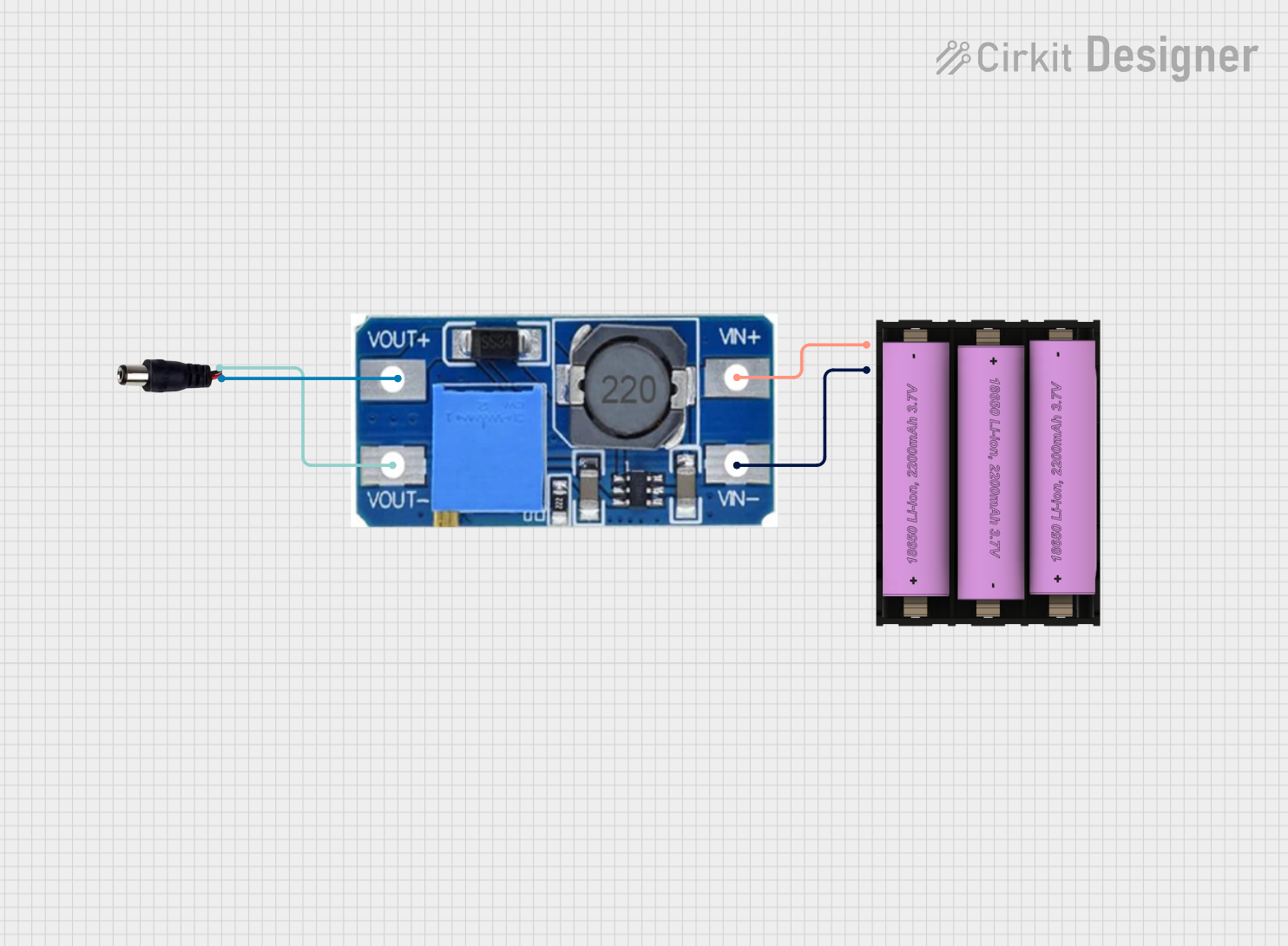
 Open Project in Cirkit Designer
Open Project in Cirkit Designer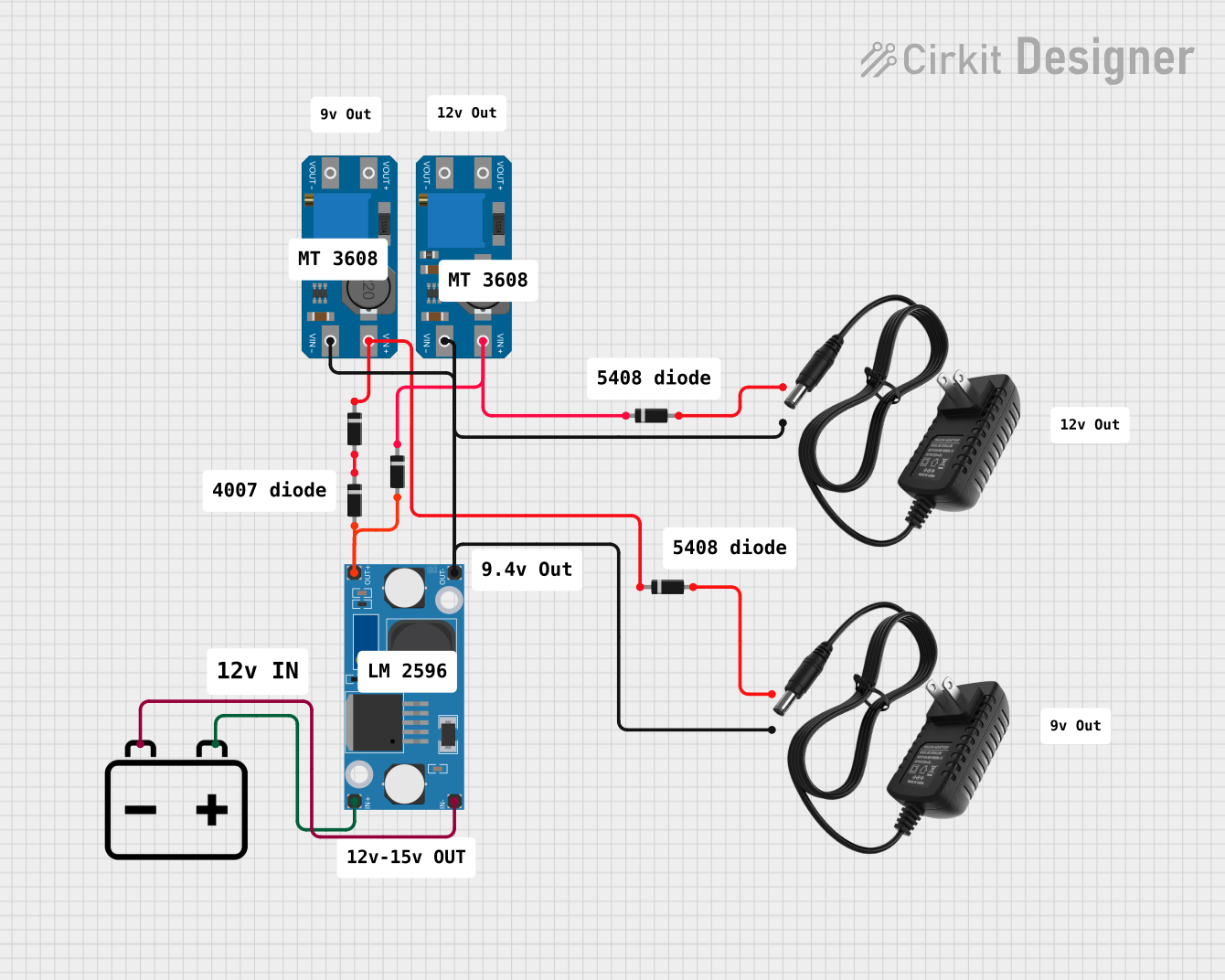
 Open Project in Cirkit Designer
Open Project in Cirkit Designer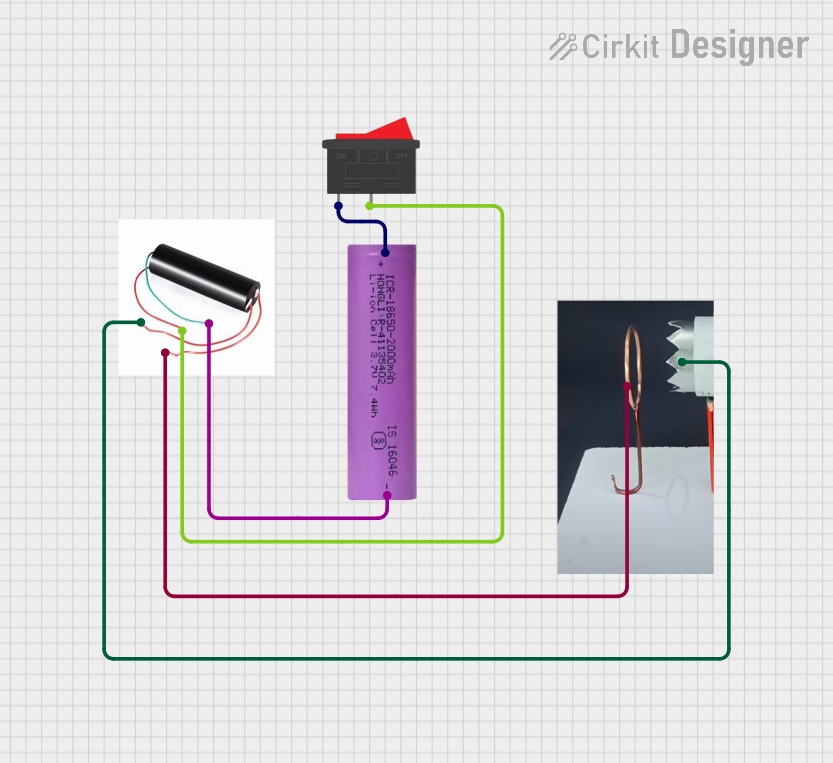
 Open Project in Cirkit Designer
Open Project in Cirkit Designer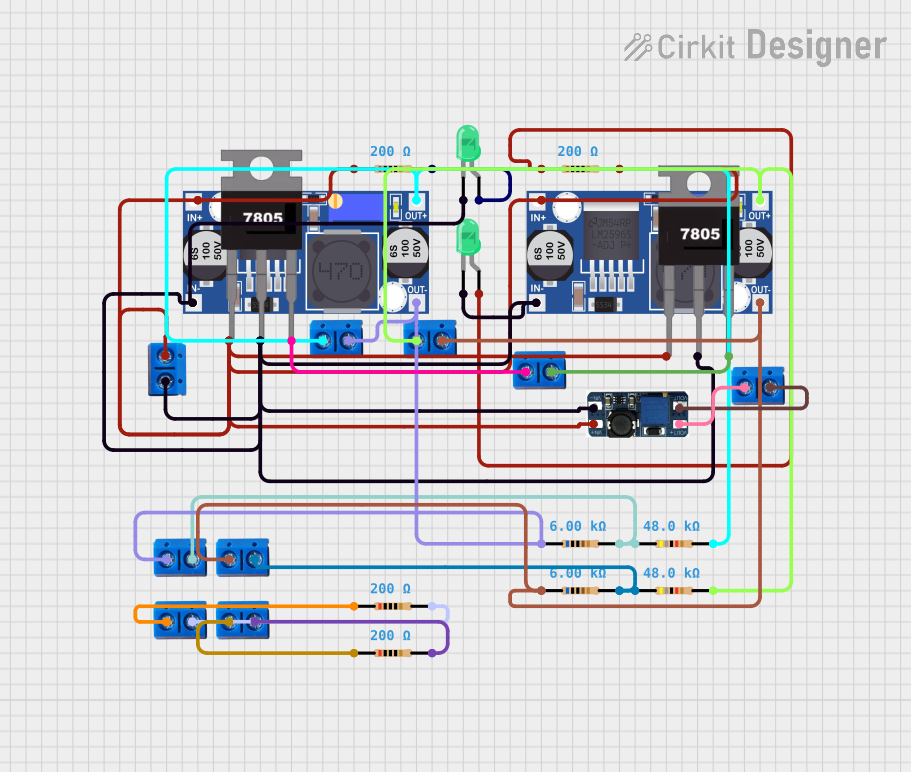
 Open Project in Cirkit Designer
Open Project in Cirkit DesignerExplore Projects Built with step up boost converter

 Open Project in Cirkit Designer
Open Project in Cirkit Designer
 Open Project in Cirkit Designer
Open Project in Cirkit Designer
 Open Project in Cirkit Designer
Open Project in Cirkit Designer
 Open Project in Cirkit Designer
Open Project in Cirkit DesignerCommon Applications and Use Cases
- Powering devices requiring higher voltage from batteries (e.g., 3.7V to 12V)
- Solar-powered systems to step up low panel voltages
- LED drivers for high-power LEDs
- USB power banks
- Portable electronics and embedded systems
Technical Specifications
Below are the general technical specifications for a typical step-up boost converter. Note that specific values may vary depending on the manufacturer and model.
| Parameter | Value |
|---|---|
| Input Voltage Range | 2V to 24V (varies by model) |
| Output Voltage Range | 5V to 50V (adjustable in some models) |
| Output Current | Up to 2A (varies by model) |
| Efficiency | Up to 95% |
| Switching Frequency | 100 kHz to 1 MHz |
| Operating Temperature | -40°C to +85°C |
Pin Configuration and Descriptions
The pinout of a step-up boost converter module may vary depending on the design, but a common configuration is as follows:
| Pin Name | Description |
|---|---|
| VIN | Positive input voltage terminal |
| GND | Ground terminal for input and output |
| VOUT | Positive output voltage terminal |
| EN (optional) | Enable pin to turn the converter on/off (active high) |
Usage Instructions
How to Use the Component in a Circuit
Connect the Input Voltage (VIN):
- Attach the positive terminal of your power source (e.g., battery) to the VIN pin.
- Connect the negative terminal of your power source to the GND pin.
Connect the Output Load:
- Attach the positive terminal of your load (e.g., LED, motor) to the VOUT pin.
- Connect the negative terminal of your load to the GND pin.
Adjust the Output Voltage (if adjustable):
- Some boost converters have a potentiometer to adjust the output voltage.
- Use a multimeter to measure the output voltage while turning the potentiometer until the desired voltage is achieved.
Enable the Converter (if applicable):
- If the module has an EN (enable) pin, ensure it is connected to a HIGH signal (e.g., 3.3V or 5V) to activate the converter.
Important Considerations and Best Practices
- Input Voltage Range: Ensure the input voltage is within the specified range of the converter to avoid damage.
- Output Voltage Setting: If the converter is adjustable, set the output voltage before connecting the load to prevent overvoltage damage.
- Heat Dissipation: For high-power applications, ensure proper heat dissipation using heatsinks or active cooling if necessary.
- Capacitor Selection: Use low-ESR capacitors for input and output filtering to improve stability and reduce noise.
- Load Current: Do not exceed the maximum output current rating to avoid overheating or failure.
Example: Using a Step-Up Boost Converter with Arduino UNO
Below is an example of using a step-up boost converter to power a 12V LED strip from a 5V Arduino UNO power source.
Circuit Connections
- Connect the Arduino's 5V pin to the VIN pin of the boost converter.
- Connect the Arduino's GND pin to the GND pin of the boost converter.
- Adjust the boost converter's output to 12V using the potentiometer.
- Connect the VOUT pin of the boost converter to the positive terminal of the LED strip.
- Connect the GND pin of the boost converter to the negative terminal of the LED strip.
Arduino Code Example
// This code demonstrates controlling the LED strip using a PWM signal
// from the Arduino UNO. The boost converter steps up the voltage to 12V.
const int pwmPin = 9; // PWM pin connected to the LED strip
void setup() {
pinMode(pwmPin, OUTPUT); // Set the PWM pin as an output
}
void loop() {
// Gradually increase brightness
for (int brightness = 0; brightness <= 255; brightness++) {
analogWrite(pwmPin, brightness); // Write PWM signal to control brightness
delay(10); // Small delay for smooth transition
}
// Gradually decrease brightness
for (int brightness = 255; brightness >= 0; brightness--) {
analogWrite(pwmPin, brightness); // Write PWM signal to control brightness
delay(10); // Small delay for smooth transition
}
}
Troubleshooting and FAQs
Common Issues and Solutions
No Output Voltage:
- Cause: Input voltage is too low or not connected properly.
- Solution: Verify the input voltage is within the specified range and check connections.
Output Voltage is Incorrect:
- Cause: Potentiometer is not adjusted correctly.
- Solution: Use a multimeter to measure and adjust the output voltage.
Overheating:
- Cause: Exceeding the maximum current rating or poor heat dissipation.
- Solution: Reduce the load current or add a heatsink to the converter.
High Noise or Instability:
- Cause: Poor input/output filtering or unsuitable capacitors.
- Solution: Use low-ESR capacitors and ensure proper grounding.
FAQs
Q: Can I use a step-up boost converter to power sensitive electronics?
A: Yes, but ensure the output voltage is stable and within the tolerance range of your device. Adding additional filtering capacitors can help reduce noise.
Q: What happens if I reverse the input polarity?
A: Most boost converters do not have reverse polarity protection and may be damaged. Always double-check connections before powering the circuit.
Q: Can I use the boost converter with a solar panel?
A: Yes, but ensure the input voltage from the solar panel is within the converter's range, and consider using a capacitor to stabilize the input.
Q: How do I calculate the efficiency of the boost converter?
A: Efficiency (%) = (Output Power / Input Power) × 100. Measure the input and output voltage and current to calculate power.
This concludes the documentation for the step-up boost converter.